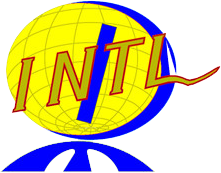Newark, April 11, 2024 (GLOBE NEWSWIRE) — The global metal casting market is estimated to be worth US$100 billion in 2023 and reach US$179.08 billion by 2033, according to Brainy Insights. In the metal casting manufacturing process, molten metal is poured into a mold cavity to create a product of the desired shape. Due to its adaptability, cost-effectiveness, and ability to produce complex components, it is an essential tool in modern manufacturing. The metal is heated to a molten state in a furnace and poured into a prepared mold cavity. The specific needs of the finished product determine which metal is best. The molten metal is poured into the mold, cooled, and solidified.
Once cooled, the metal part is removed from the mold. Metal casting is used in many industries, including automotive, aerospace, construction, and manufacturing. It produces a variety of parts and components, from complex mechanical parts to engine blocks. Metal casting is a flexible, cost-effective, and highly accurate method for producing complex shapes. It enables mass production of identical parts, rapid prototyping, and customization. Metal casting also reduces waste and its environmental impact by recycling scrap metal generated during the process.
Strong industrial infrastructure supports the production of various metal casting products, especially in countries such as China, India, Japan and South Korea, coupled with advanced manufacturing facilities and a skilled workforce, helping the region to dominate the global market. Rapid infrastructure development, urbanization and industrial development also contribute to the region’s growth. The region’s manufacturing, automobile, aerospace and construction industries are the main consumers of metal casting, which has fueled expansion and investment in the industry. Government support for the industry through incentives, subsidies and infrastructure spending has spurred technological breakthroughs in metal casting technology, equipment and materials, spurring the growth of the industry.
In 2023, the sand casting industry will dominate the market with the largest market share of 45% and revenue of $45 billion.
The technology part is divided into sand casting, gravity casting, high pressure die casting (HPDC), low pressure die casting (LPDC), etc. In 2023, the sand casting segment will dominate the market with the largest market share of 45% and a revenue of US$45 billion.
In 2023, the market will be dominated by the aluminum industry with the largest market share of 38% and revenue of $38 billion.
The material type segment is divided into cast iron, aluminum, steel, zinc, magnesium and others. In 2023, the market will be dominated by the aluminum segment with the largest market share of 38% and revenue of $38 billion.
In 2023, the market will be dominated by the automotive and transportation sectors with the largest market share of 39% and revenue of $39 billion.
The end-use segment is divided into automotive & transportation, equipment & machinery, construction, aerospace & defense, and others. The automotive & transportation segment will dominate the market in 2023 with the largest market share of 39% and revenue of $39 billion.
To address critical U.S. defense needs in the foundry and forging industries, the Institute for Advanced Composites Manufacturing Innovation (IACMI) and the Defense Industrial Base Analysis and Sustainability (IBAS) program announced a national workforce plan. The Department of Defense and IACMI have entered into a multi-year agreement and are currently developing a curriculum that will provide the metals industry with multiple training opportunities focused on improving the engineering workforce and industry.
Growing industrialization is driving the demand for machinery, equipment, and infrastructure components; these products rely heavily on metal castings. There is a continuing need to expand industrial capacity and replace aging infrastructure worldwide. Rapid industrialization and infrastructure development in developing countries have made them major consumers of metal components for industry, transportation, and construction. The growth of the automobile industry has largely driven the demand for metal castings. As the world population grows and urbanization accelerates, so does the demand for automobiles, driving demand for metal castings in the automobile industry. Rapid industrialization will therefore contribute to the expansion of the market.
The need to make molds and patterns for specific parts is the main reason for the high initial cost of molds in metal casting. The procedure requires high initial costs because it requires specialized labor, materials, and equipment. Designing molds and patterns requires engineering expertise, which further increases the cost. The cost of materials to create the pattern and the use of specialized tools are other factors that affect the overall cost of the mold. Therefore, the cost issue of metal casting will hold back the expansion of the market.
Customization, innovation, and process and material development have driven the growth of metal casting and its applications. The range of applications for metal casting has expanded as advances in materials science and technology have led to the development of new alloys with superior properties. These alloys are suitable for demanding industrial and automotive applications because they improve strength, durability, and corrosion resistance. Product development cycles are accelerating, and rapid prototyping capabilities are driving innovation. Sustainability concerns are also driving advances in metal casting technology. Recycling programs conserve resources and reduce waste, mitigating the environmental impact of casting operations. Waste reduction and energy-efficient technology programs enhance sustainability.
Metal casting operations require significant energy inputs throughout the process and often rely on fossil fuels. This results in the emission of pollutants that contribute to air pollution, smog, and climate change. Additionally, metal casting generates various wastes, and improper disposal of these wastes can lead to environmental pollution and habitat destruction. Additionally, metal casting relies on limited resources mined from the earth’s crust, raising concerns about resource depletion and sustainability. Thus, environmental issues associated with metal casting will be a challenge for the market growth.
Post time: Jan-06-2025
